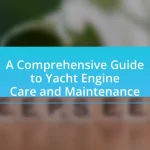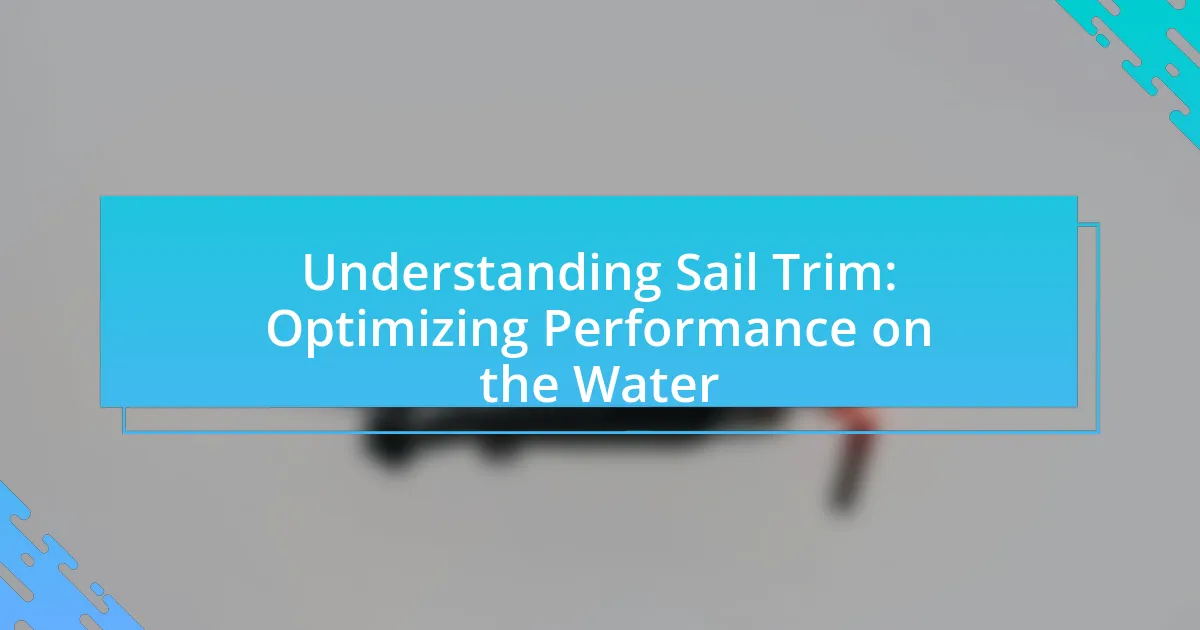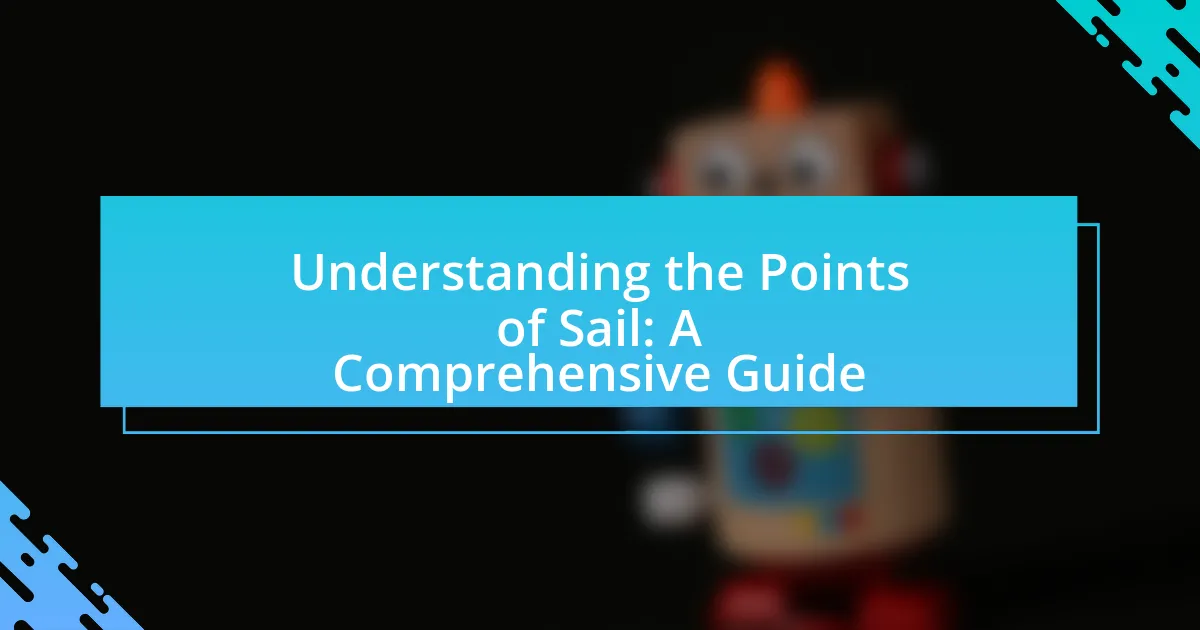The article focuses on the challenges and techniques for experienced sailors when handling strong winds while sailing. It outlines the risks associated with high winds, such as increased heeling, loss of control, and capsizing, and emphasizes the importance of assessing wind strength and direction. Key strategies discussed include reducing sail area, adjusting sail trim, and employing effective steering techniques to maintain stability and safety. Additionally, the article highlights essential safety measures, equipment checks, and emergency procedures that sailors should implement to navigate adverse weather conditions effectively.
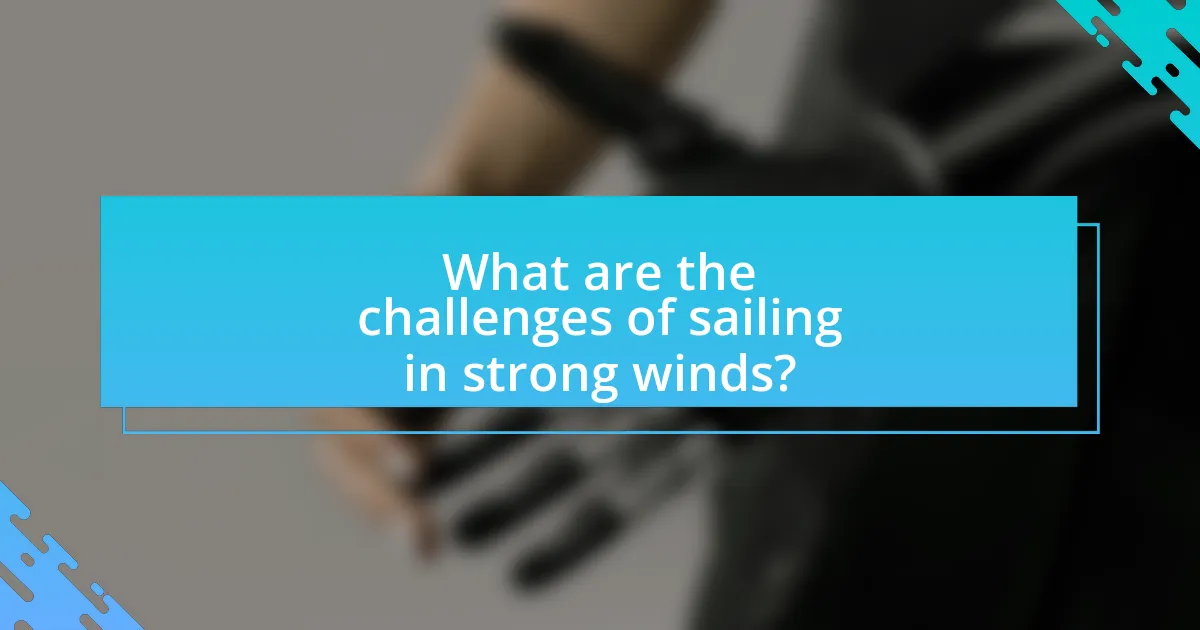
What are the challenges of sailing in strong winds?
Sailing in strong winds presents several challenges, including increased heeling, difficulty in steering, and the risk of capsizing. Increased heeling occurs when the boat tilts excessively, which can lead to loss of control and stability. Difficulty in steering arises as the boat becomes more responsive and harder to manage, requiring skilled handling to maintain a straight course. The risk of capsizing is heightened due to the force of the wind overpowering the boat’s ability to right itself, particularly in smaller vessels. These challenges necessitate advanced sailing techniques and equipment adjustments to ensure safety and performance.
How do strong winds affect boat stability?
Strong winds significantly reduce boat stability by increasing the heeling angle and causing potential capsizing. When wind speeds exceed a boat’s design limits, the force exerted on the sails can lead to excessive tilting, which compromises the vessel’s balance. Research indicates that boats can experience a critical angle of heel, typically around 30 degrees for many sailing vessels, beyond which stability rapidly decreases, increasing the risk of capsizing. Additionally, strong winds can create turbulent water conditions, further destabilizing the boat and making it harder to control.
What are the signs of instability in strong winds?
Signs of instability in strong winds include sudden shifts in wind direction, increased gustiness, and the presence of dark, ominous clouds. These indicators suggest that the wind conditions may be changing rapidly, which can lead to dangerous sailing situations. For instance, sudden shifts in wind direction can cause unexpected changes in boat handling, while increased gustiness can lead to loss of control. Additionally, dark clouds often signal approaching storms, which can further exacerbate instability. Recognizing these signs is crucial for sailors to make timely adjustments and ensure safety on the water.
How can sailors assess wind strength and direction?
Sailors can assess wind strength and direction by using tools such as an anemometer for measuring wind speed and a wind vane for determining wind direction. An anemometer provides precise wind speed readings, which are crucial for understanding the conditions at sea, while a wind vane indicates the direction from which the wind is blowing, allowing sailors to adjust their sails accordingly. Additionally, sailors often observe the water surface and the behavior of the sails to gauge wind conditions, as ripples and whitecaps can indicate stronger winds. These methods are validated by maritime practices that emphasize the importance of accurate wind assessment for safe navigation and effective sailing.
What risks do sailors face in strong winds?
Sailors face several risks in strong winds, including capsizing, loss of control, and equipment failure. Capsizing occurs when the force of the wind exceeds the vessel’s stability, leading to a complete overturn. Loss of control can happen due to excessive heeling, making it difficult to steer or navigate effectively. Equipment failure, such as torn sails or broken rigging, can result from the strain of high winds, compromising the safety and integrity of the vessel. According to the U.S. Coast Guard, strong winds are a leading cause of maritime accidents, highlighting the importance of understanding and mitigating these risks.
How can strong winds lead to capsizing?
Strong winds can lead to capsizing by creating excessive heeling, which destabilizes a vessel. When wind pressure on the sails exceeds the boat’s righting moment, the force can cause the boat to tilt beyond its safe angle, resulting in a loss of balance. For instance, a sailboat can capsize if wind speeds exceed 20 knots, especially if the crew fails to reduce sail area or adjust the boat’s course. This phenomenon is supported by data from the U.S. Coast Guard, which indicates that many capsizing incidents occur in conditions where wind speeds are significantly high and not managed properly.
What equipment failures are common in high winds?
Common equipment failures in high winds include mast breakage, sail damage, and rigging failures. Mast breakage often occurs due to excessive lateral forces, which can exceed the structural limits of the mast, especially in older vessels. Sail damage typically results from flapping and tearing caused by strong gusts, leading to compromised performance and safety. Rigging failures, including shroud and stay failures, can happen when the tension exceeds the material limits, often exacerbated by sudden wind shifts. These failures are documented in marine safety reports, highlighting the importance of regular equipment inspections and maintenance to mitigate risks associated with high winds.

What techniques can experienced sailors use to handle strong winds?
Experienced sailors can use techniques such as reducing sail area, adjusting sail trim, and employing heeling control to handle strong winds effectively. Reducing sail area, by either reefing the mainsail or using smaller headsails, minimizes the force of the wind on the boat, enhancing stability. Adjusting sail trim ensures that sails are positioned to maximize efficiency and reduce weather helm, which can lead to loss of control. Employing heeling control techniques, such as using ballast or shifting crew weight, helps maintain an optimal balance and prevents excessive leaning, which can compromise safety and performance. These methods are supported by sailing principles that emphasize balance and control in adverse conditions.
How can sail adjustments improve performance in strong winds?
Sail adjustments can significantly improve performance in strong winds by optimizing the sail shape and angle to reduce heeling and increase speed. By flattening the sails and adjusting the trim, sailors can minimize drag and maintain better control of the vessel. For instance, reducing the sail area through reefing or adjusting the sail’s angle to the wind can help prevent overpowering the boat, which is crucial in maintaining stability and maneuverability. Studies have shown that proper sail trim can enhance a boat’s speed by up to 20% in strong wind conditions, demonstrating the importance of these adjustments for effective sailing.
What are the best sail configurations for heavy winds?
The best sail configurations for heavy winds include reefing the mainsail and using a smaller headsail, such as a storm jib. Reefing the mainsail reduces its surface area, minimizing heeling and improving control, while a storm jib provides better balance and handling in strong gusts. These configurations are widely recommended by sailing experts and are essential for maintaining stability and safety in challenging conditions.
How does reefing sails enhance safety and control?
Reefing sails enhances safety and control by reducing the sail area exposed to strong winds, which minimizes the risk of capsizing and loss of control. When a sailor reefs, they effectively lower the center of effort of the sails, allowing for better balance and stability of the vessel. This adjustment is crucial in strong wind conditions, as it prevents excessive heeling and maintains manageable speed. Studies have shown that properly reefed sails can significantly decrease the likelihood of accidents during high winds, as they allow for more responsive handling and reduce the strain on the rigging and hull.
What steering techniques are effective in strong winds?
Effective steering techniques in strong winds include using a balanced helm, adjusting sail trim, and employing the technique of “steering to the waves.” A balanced helm allows for better control of the vessel, reducing the risk of being overpowered by wind. Adjusting sail trim optimizes the sail’s shape and angle, which helps maintain speed and stability. Steering to the waves involves aligning the boat’s heading with the wave direction to minimize the impact of wind and waves, enhancing overall maneuverability. These techniques are supported by sailing practices that emphasize the importance of maintaining control and stability in challenging conditions.
How can experienced sailors use the rudder effectively?
Experienced sailors can use the rudder effectively by making precise and timely adjustments to maintain control and direction in strong winds. By understanding the relationship between sail trim and rudder input, sailors can minimize the need for excessive rudder movements, which can lead to increased drag and reduced speed. For instance, when sailing upwind, experienced sailors often use a technique called “balance,” where they adjust the sails to achieve a neutral helm, allowing the boat to steer itself with minimal rudder input. This technique is supported by the principle that a well-trimmed sail generates optimal lift, reducing the reliance on the rudder for steering. Additionally, experienced sailors anticipate wind shifts and adjust the rudder proactively, rather than reactively, to maintain course and stability, which is crucial in strong wind conditions.
What role does weight distribution play in steering?
Weight distribution significantly affects steering by influencing the balance and responsiveness of a vessel. When weight is evenly distributed, a boat maintains stability and optimal control, allowing for precise steering adjustments. Conversely, uneven weight distribution can lead to excessive heel or drag, making steering less responsive and more challenging, particularly in strong winds. Studies in marine engineering indicate that proper weight distribution enhances maneuverability and reduces the risk of capsizing, thereby improving overall sailing performance.
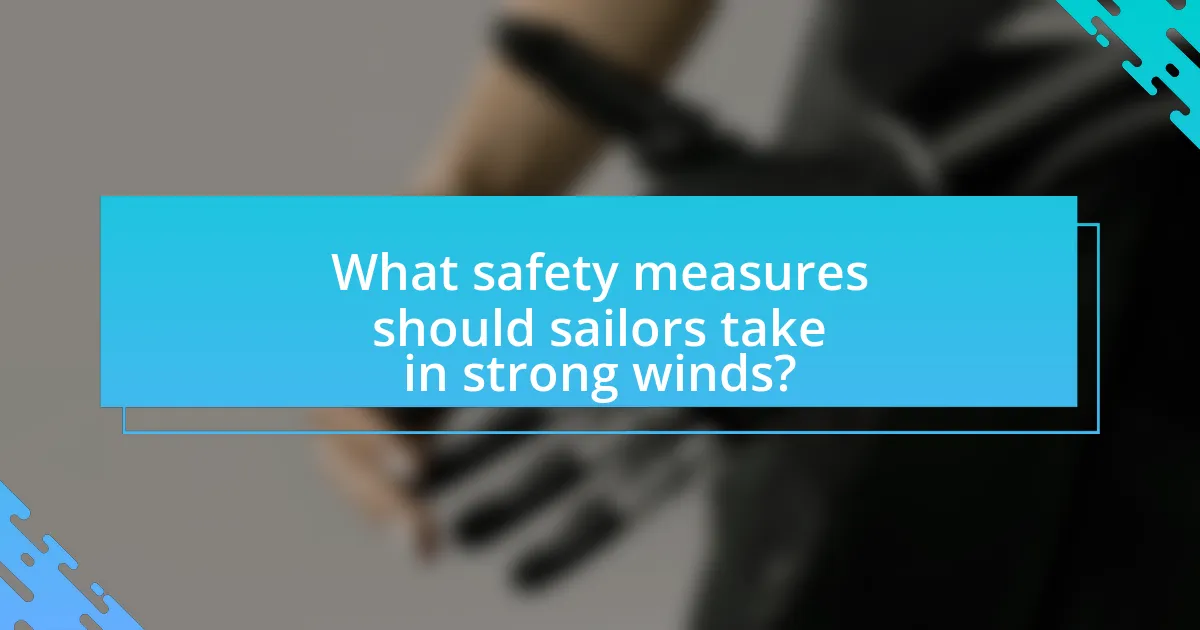
What safety measures should sailors take in strong winds?
Sailors should reduce sail area and secure all gear when facing strong winds. Reducing sail area minimizes the risk of capsizing and allows for better control of the vessel. Securing gear prevents it from becoming a hazard during turbulent conditions. Additionally, sailors should monitor weather updates and adjust their course to avoid the worst of the wind. These measures are critical as strong winds can lead to dangerous situations, including loss of control and potential accidents at sea.
How can sailors prepare their vessel for strong winds?
Sailors can prepare their vessel for strong winds by securing all loose items, reefing sails, and ensuring the rigging is tight. Securing loose items prevents them from becoming projectiles that could cause damage or injury. Reefing sails reduces the sail area, which helps maintain control and stability in high winds. Tight rigging ensures that the mast and sails remain properly aligned and functional, reducing the risk of equipment failure. These practices are essential for maintaining safety and performance during adverse weather conditions.
What equipment checks are essential before sailing?
Essential equipment checks before sailing include verifying the condition of the sails, checking the rigging, inspecting the engine and fuel system, ensuring the navigation equipment is functional, and confirming the presence of safety gear such as life jackets and flares. These checks are critical as they ensure the vessel is seaworthy and capable of handling adverse conditions, particularly in strong winds. For instance, a study by the Royal Yachting Association emphasizes that regular maintenance and thorough pre-sailing inspections significantly reduce the risk of accidents at sea.
How can proper stowage prevent accidents during high winds?
Proper stowage can prevent accidents during high winds by ensuring that all equipment and cargo are securely fastened and distributed evenly, which minimizes the risk of shifting or falling. When items are properly stowed, they reduce the likelihood of creating imbalances that can lead to capsizing or loss of control. According to the U.S. Coast Guard, improper stowage is a leading cause of boating accidents, particularly in adverse weather conditions. By adhering to best practices in stowage, sailors can maintain stability and safety while navigating through high winds.
What emergency procedures should be in place for strong winds?
Emergency procedures for strong winds include securing all loose items on deck, ensuring that sails are reefed or furled to reduce wind exposure, and preparing for potential loss of power by checking all safety equipment. Sailors should also establish a communication plan to alert crew members of changing conditions and designate a safe area on the vessel for crew to gather if needed. According to the U.S. Coast Guard, proper preparation and adherence to safety protocols can significantly reduce the risk of accidents during high wind events.
How can sailors effectively communicate during a storm?
Sailors can effectively communicate during a storm by using standardized hand signals, radio communication, and visual aids. Standardized hand signals allow crew members to convey messages quickly and clearly without relying on verbal communication, which can be difficult in high winds and heavy rain. Radio communication, particularly VHF radios, enables sailors to maintain contact with each other and with shore stations, providing updates on conditions and coordinating actions. Visual aids, such as flags or lights, can also be employed to signal intentions or alerts to nearby vessels. These methods are crucial for ensuring safety and coordination among crew members during adverse weather conditions.
What are the best practices for abandoning ship if necessary?
The best practices for abandoning ship include following the established emergency procedures, ensuring all crew members are accounted for, and using life jackets and lifeboats. First, sailors should familiarize themselves with the ship’s emergency plan, which outlines the steps to take in case of an evacuation. Crew members must be instructed to don life jackets immediately to enhance buoyancy and visibility in the water.
Next, it is crucial to gather at the designated muster station to ensure everyone is present and to receive further instructions. Lifeboats should be launched in an orderly manner, with priority given to women, children, and those in need of assistance. According to the International Maritime Organization, proper training and drills can significantly increase survival rates during emergencies at sea.
Finally, once in the water, individuals should stay together and signal for rescue, as this increases the chances of being located by search and rescue teams.
What are the best tips for handling strong winds while sailing?
To handle strong winds while sailing, sailors should reduce sail area, balance the boat, and maintain a proper course. Reducing sail area can be achieved by reefing the mainsail or using a smaller headsail, which minimizes heeling and improves control. Balancing the boat involves adjusting the sail trim and weight distribution to ensure stability, preventing excessive heeling that can lead to capsizing. Maintaining a proper course means steering slightly off the wind to reduce the impact of gusts, allowing for better maneuverability and control. These strategies are essential for safety and effective sailing in challenging wind conditions.
How can sailors maintain calm and focus in challenging conditions?
Sailors can maintain calm and focus in challenging conditions by employing effective stress management techniques and adhering to established sailing protocols. Techniques such as deep breathing, visualization, and positive self-talk help sailors manage anxiety and maintain mental clarity. Additionally, following a structured approach to sailing, including pre-sailing checks, clear communication among crew members, and practicing emergency procedures, reinforces confidence and focus. Research indicates that experienced sailors who engage in mental preparation and practice mindfulness techniques are better equipped to handle high-pressure situations, leading to improved decision-making and safety outcomes.
What resources are available for further learning about sailing in strong winds?
Books such as “Heavy Weather Sailing” by Peter Bruce and “Sailing in Strong Winds” by John Rousmaniere provide comprehensive insights into handling strong winds. Additionally, online platforms like the American Sailing Association and the Royal Yachting Association offer courses and articles focused on advanced sailing techniques in adverse weather conditions. These resources are validated by their widespread use among experienced sailors and sailing instructors, ensuring that the information is reliable and practical for real-world applications.











